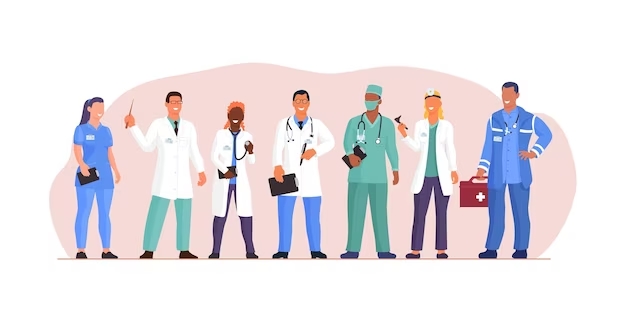Physician
Note: CSUSB does NOT have a physician program. Be sure to utilize these pages as how-to guides, checking out the list of institutions where you can pursue these pathways (at the bottom of each section).

A physician, also known by many names and specialties, is a highly trained healthcare provider licensed to practice medicine, prescribe medications, perform surgery, and provide medical care to patients. Physicians, typically referred to as doctors, have the authority to diagnose, prescribe, and provide comprehensive medical care and referrals to individuals suffering from injury or disease.
There are three different types of degrees that a physician can have: Medical Doctor (MD), Doctor of Osteopathic Medicine (DO), or Doctor of Podiatric Medicine (DMP). These degrees are the primary pathways students take to become a physician. The main difference within each pathway lies in their approach to healthcare. The choice of degree and specialty can influence a physician’s approach to healthcare and the types of treatments they may offer.
For assistance on how to request a committee letter, visit our Committee Letter Request page!
HPAC Committee Letter Request Page
Stuck on where to start your pre-med journey? Check out our Steps Towards Medical School page to get help!
Medical School Prerequisites
NOTE: CSUSB does not offer a Medicine educational program. Information is for pre-health advising purposes. Specific prerequisite courses can vary by school--always double-check the website of each medical school you are applying to for specific requirements. Please review the CSUSB Catalog as a guide to completing prerequisites at CSUSB.
| Prerequisites | CSUSB Courses |
Biology: One year or two semesters of General Biology with lab. |
BIOL 2010 and BIOL 2020 |
Chemistry: One year or two semesters of General Chemistry with lab. One year or two semesters of Organic Chemistry with lab. |
CHEM 2100 & 2100L and CHEM 2200 & 2200L CHEM 2400 & 2400L and CHEM 2500 & 2500L OR CHEM 3400 & CHEM 3500 |
Math: One year or two semesters of Calculus and/or Statistics.
Students must place/test into MATH 2210 (Calculus I) OR take MATH 1401 (Pre-calculus) before MATH 2210. |
MATH 2210 (Calculus) and/or MATH 1201 (Statistics) BIOL 5050 (Biostatistics) |
Physics: One year or two semesters of Physics with lab. |
PHYS 2000 & 2000L and PHYS 2010 & 2010L OR PHYS 2500 & 2500L and PHYS 2510 & 2510L |
What is the MCAT?
The Medical College Admission Test (MCAT) is a standardized test that the majority of U.S. medical schools require for admission. The purpose of the test is to evaluate and apply the skills, knowledge, and critical thinking that potential applicants have. The MCAT is composed of 5 main sections that would be completed within 6 hours and 15 minutes.
These sections include:
- Chemistry and Physics
- Biology and Biochemistry
- Psychology and Sociology
- Math
- Critical Analysis and Reasoning Skills (CARS)